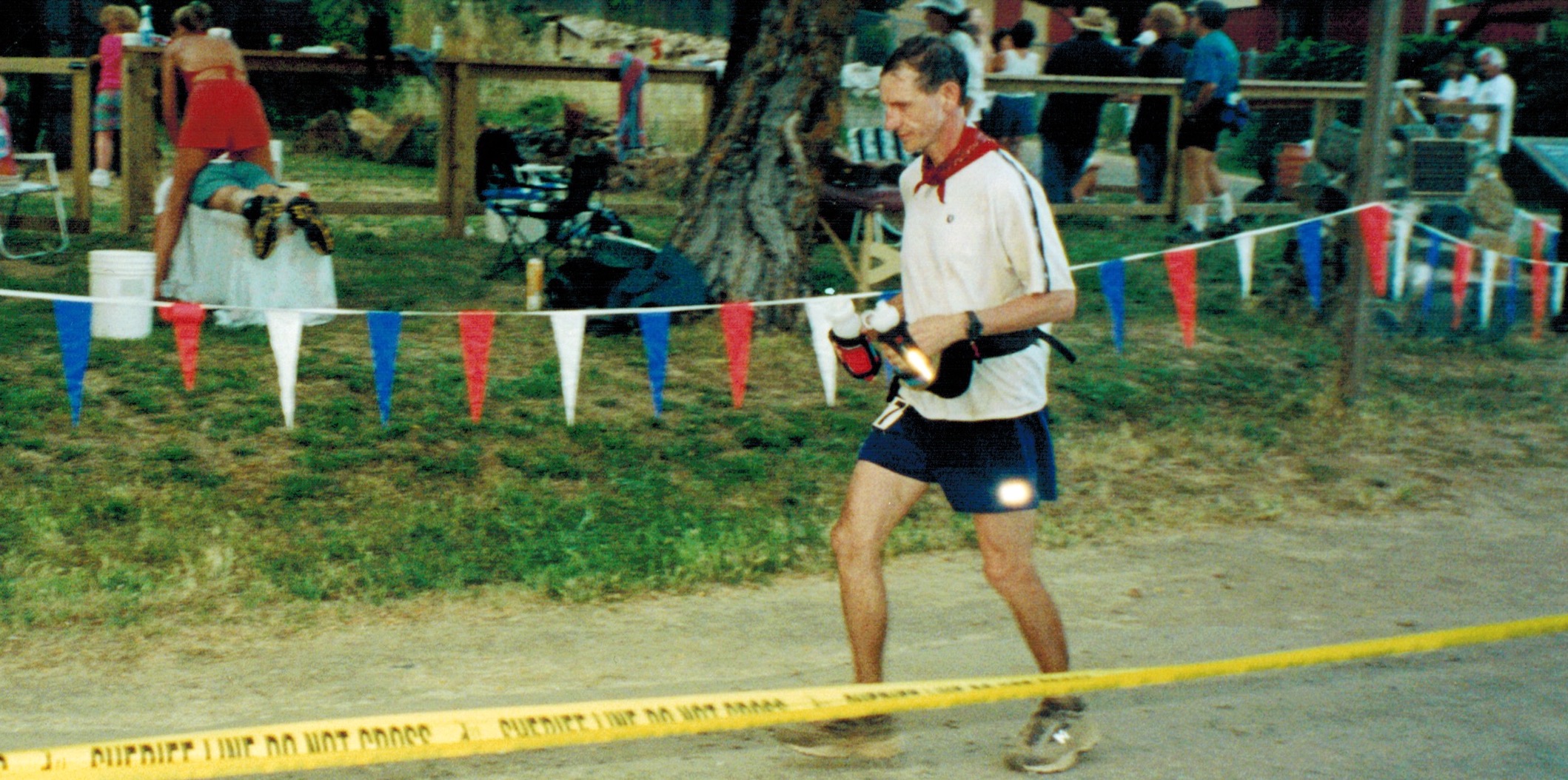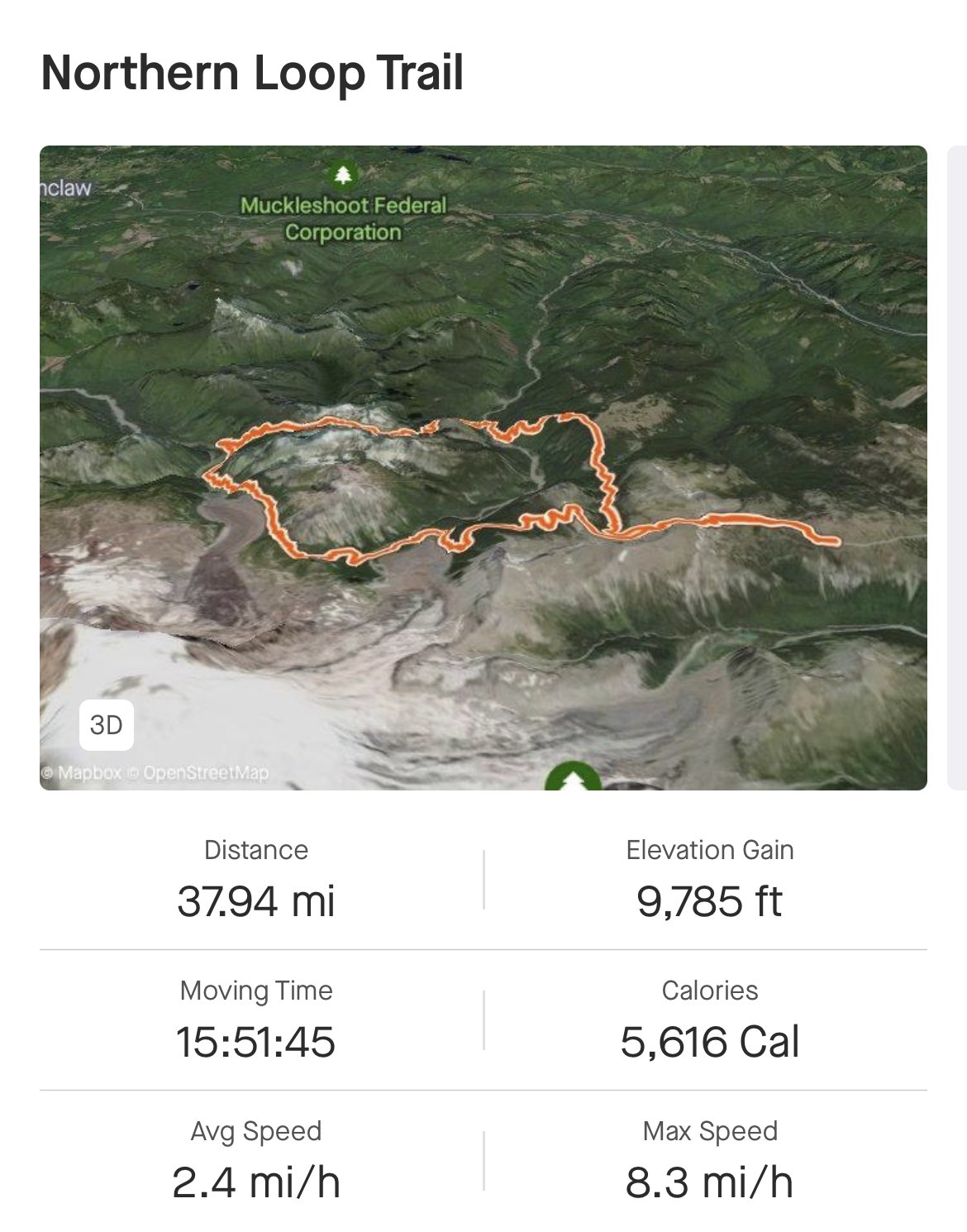Fastpacking Considerations: What Works for Me
I’ve done the Wonderland 35 times; out of those 35 times, I must be somewhere near 30 as three day fastpacks. I know I had a few 4 day and/or 5 day trips in there, plus my first at 7 days…throw in a 36 hour sufferfest in September 1999 and a sub 48 hour two parter in 2010. Last year I was aiming for 48 hours but had to hunker down on the second night due to poor weather near Panhandle Gap. That resulted in my fastest 3 day to date, finishing up at 6 PM on the third day with strong legs; I was 68. Read on to see what has worked for me.
•LUCK• I’ve been around long enough to see some of my peers experience setbacks in their health, especially after age 50. Heart problems, knee problems, back problems, foot problems, hip problems…so many things can derail one’s fitness; sometimes temporary, sometimes permanently. So I realize how lucky I am to still have good mechanics…nothing, so far, to preclude running, skiing, biking, hiking, kendo (although I temporarily suspended practicing when I retired). Maybe genetics plays a part here, and surely my stable weight over the decades helps (which takes work).
On the return of a 27 hour summit of Mt. Rainier: suffering in the cold and altitude
•CONSISTENCY• I ran my first marathon when I was 38 and never looked back. Boston 5 times, numerous other marathons, half marathons, and eventually ultras including Western States 100. I’m always engaged in some yearly activity that keeps my body tuned up, and the goal of an annual 3 day Wonderland Trail fastpack provides all the motivation I need to get it done.
104 miles in a 24 hour sufferfest
•MENTAL TOUGHNESS• I learned the hard lessons of mind/body connection through mountaineering and ultramarathons. Unless you have experienced utter fatigue and the fight to come out the other side, you’ll never understand what you are capable of. I was running a 24 hour race on a track and at one point around 50 miles had trouble putting one foot in front of the other. I took a 15 minute break, put my feet up and self massaged, then made myself get back on the track, convinced that it was fruitless to keep going. But slowly, each lap, I could feel myself recovering, nurtured by judicious food and fluid intake. I went on to win my age division in that race, putting in 104 miles. The hardest lesson though was my first Western States 100. Somewhere around mile 75, as I was descending to cross the American River, my legs stopped working and were basically flopping around. I don’t know how I stayed on my feet, literally. I had done everything right; electrolytes, hydration, caloric intake…all good. After I crossed the river my buddy Craig, my crew person, was there to meet me and I said I was done. We walked up to the next aid station and I told the woman who was working that I was pulling out. Her response was, “Are you sure you want to quit? Because you still have about 3 minutes before the cutoff.” My response: “You’re right, I’ll at least try to make it to the next station”, so I bid Craig adieu and stumbled off, joined by a pacer whose runner had quit and asked to pace me. I said why not, but I’m not doing too well. But then…I started to feel better and better, my legs made a miraculous recovery, and at some point I started running again, feeling fresh as the morning broke. I was thinking I could pull this off (I was around mile 85) and was nearing the last cutoff station. But as I came around the corner with the station in sight, the horn went off. I had missed the cutoff time and was not allowed to continue by a matter of 2 minutes. My lack of mental toughness cost me a DNF (Did Not Finish). If I hadn’t diddle f*#ked around walking, lamenting my legs, I would have finished. The next year I had steely focus, and my attitude was “they’ll have to drag me off the course.” I had learned that no matter how drained and fatigued I felt, there was always a chance of recovery. Suffering during long events, be it mountaineering, biking or running, is a learned thing, becoming a familiar thing, and this leads to confidence in eventual success.
Maple Creek camp on the Wonderland: 1987
•FAMILIARITY/EXPERIENCE• I’m talking a different form of experience vice suffering. When contemplating a difficult fastpack like a 3 day Wonderland, I call on 40 years of spending time outside; dealing with weather, trail difficulties like blowdowns, unbridged river crossings, animal encounters (almost stepped on a skunk one night), night hiking, bugs, low temps, high temps, smoke, unexpected occurrences, unexpected delays, losing the trail…you get the gist. If all my training were indoors on treadmills I’d be ill prepared for the vagaries of the trail, including hiking/running/trotting on uneven surfaces, rocks, roots, big steps up, big steps down etc. One of the keys to my success is how comfortable I am in the outdoors in all conditions, and my problem solving experience when unforeseen obstacles arise. Being on the Wonderland so many times over decades, be it a thru hike or just getting somewhere else, instills confidence and approaching the task at hand in a relaxed manner.
Using a Blizzard Tube for 2 (my daughter was on this hike) as shelter and sleep system
•EQUIPMENT• This one is simple. A light pack is instrumental to success. There is no way I could pull off a 3 day self supported fastpack of the Wonderland if I were schlepping 30 or more pounds. I’ve posted on prior blogs about how I prep and what I’m carrying, so I won’t repeat that here. However, my fast and simple rule is if I put my pack on, including food and water, and don’t notice it, or if I don’t need to take the pack off during the day, then I’m good. This usually comes out to 12-15 pounds, most times even less. I always carry enough equipment to be safe; a way to hunker down in poor weather, including shelter, sleeping bag/quilt, pad and clothing that will keep me warm on the move. My experience and anticipated conditions guides my equipment selections for any particular hike.
NLT as a trainer for the Wonderland
•TRAINING• Fastpacking the Wonderland over 3 days didn’t take much prep back in the days when I was running ultras in my 40’s. I’ve had to adapt as I’ve aged. Yes, I have just gone for it with little prep, and those trips added to my suffering experience cache tremendously. With little physical margin I had to dig deep…really deep. But I like it much better if I have margin, where I’m tuned up. Of late I’ve availed myself of a bike trainer, and I’ve watched my functional threshold (basically power/watts) keep rising. What this does for me is fine tune my aerobic engine, perhaps better than any time in the past 20 years since I stopped running ultras. With the engine in top shape, it’s just a matter of targeting those other muscles, especially the downhill legs. For 30 years I’ve attested to hammering the downhills a few times before hitting the trail, and this has in fact been proven in more recent studies. I’ll start the season with a few trail runs incorporating around 3000’ of continuous vertical, trotting the downhill the entire distance. After the initial cringe worthy soreness (where steps equal torture), I will probably do what I did last season; hike the Northern Loop Trail in one day, logging 38 miles and 9,800’ of elevation gain/loss. Back in the day I could do this in 12 hours but last year it took me 18 (however, I hadn’t been on trail for the month prior). Then I know I’m good if I hit the Wonderland within 2-3 weeks. Last year I did the NLT on August 3, then spent some days peak bagging over the next 2 weeks, then set off on the Wonderland on August 21. Day 1 had me at 47 miles with 12,500’ of elevation gain over 21 hours, and my legs still felt good.
•PLANNING• Unlike regular backpackers who spend multiple days on trail, a 3 day fastpack of the Wonderland is logistically much easier. I usually aim for resting at Mowich Lake and White River (starting at Longmire), both being drive in and FCFS campgrounds. Sometimes I see what backcountry camps are available and snatch a spot there if it works. I do always check in and tell the rangers what I’m doing so they know I’m on the trail and who the parked vehicle belongs to. I also aim for good weather windows if possible…why hike this trail in bad weather if you have the flexibility to avoid it? Plus I always plan for weekdays and eschew weekends. I’ve mentioned that I am always self supported, but many people plan their 3 day with stops at these same spots to meet their support; someone who sets up camp for them, resupplies them and generally takes care of the hiker/runner. BUT, what if for some reason your support does not make the meetup? Generally you are SOL…if you are counting on this support you are unlikely to have shelter/sleep systems or even more than one day of food. Now you’re at Mowich Lake or White River in the evening, stranded and essentially ill equipped to continue on. If you are paranoid about this and bring along the “just in case” items, then why bother with support at all? Roll the dice and embrace the adventure? “Adventure is just poor planning” (Roald Amundsen). In my view a self supported hike eliminates external variables like meetups and puts everything in my control. If I need extraction or unplanned support for any reason I can use my inReach to text specifics, which equates to a plan B.
Not much has changed since 2011; video still available here
There are many variables in prepping for a Wonderland fastpack (I consider 5 days or more a regular hike) but paying attention to the preceding bullet points have served me well. Barring unforeseen difficulties or health reasons, I feel confident that I can knock out another 3 day fastpack of the Wonderland in 2024. I may be contemplating a yoyo this year, which would put me at number 36 and 37, but that decision will be made right before I start. One must always have a goal! I hope this helps for anyone contemplating a Wonderland 3 day. Happy Hiking/Running/Trotting!















